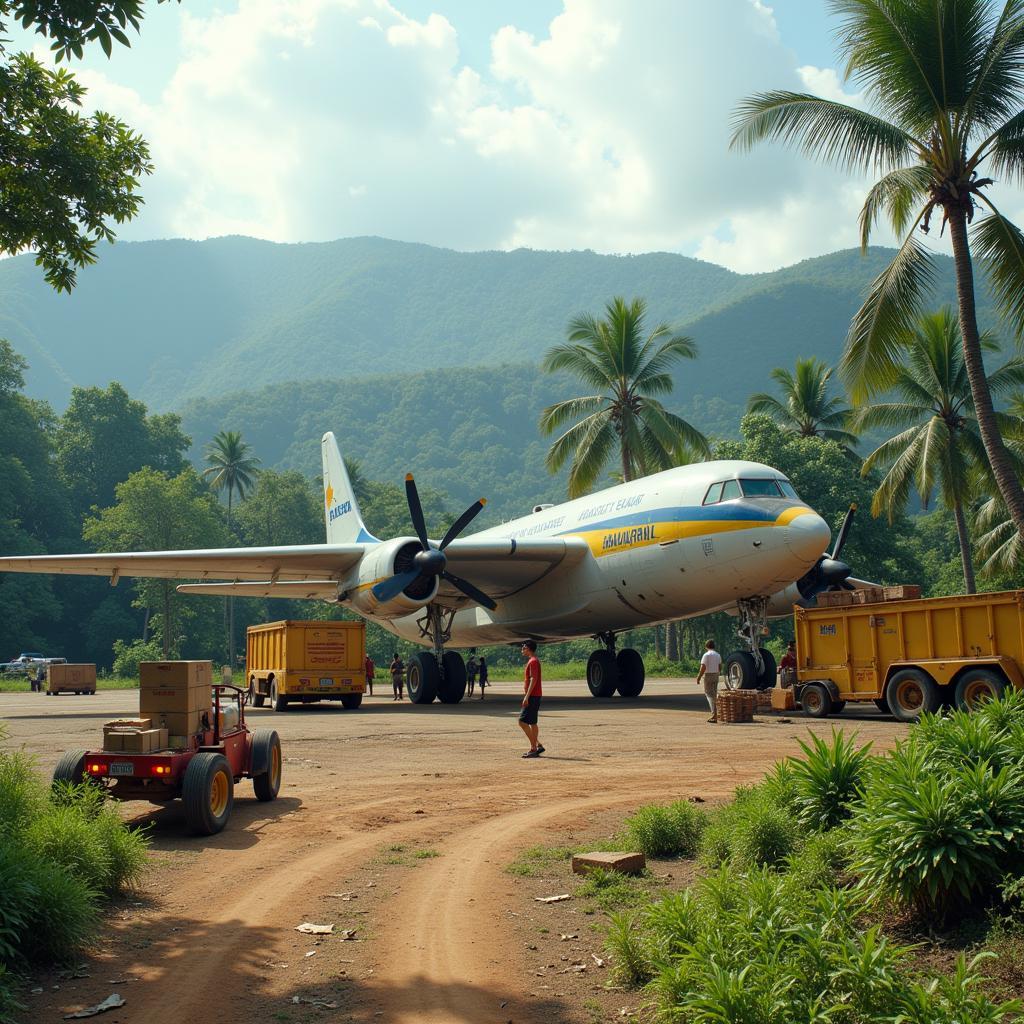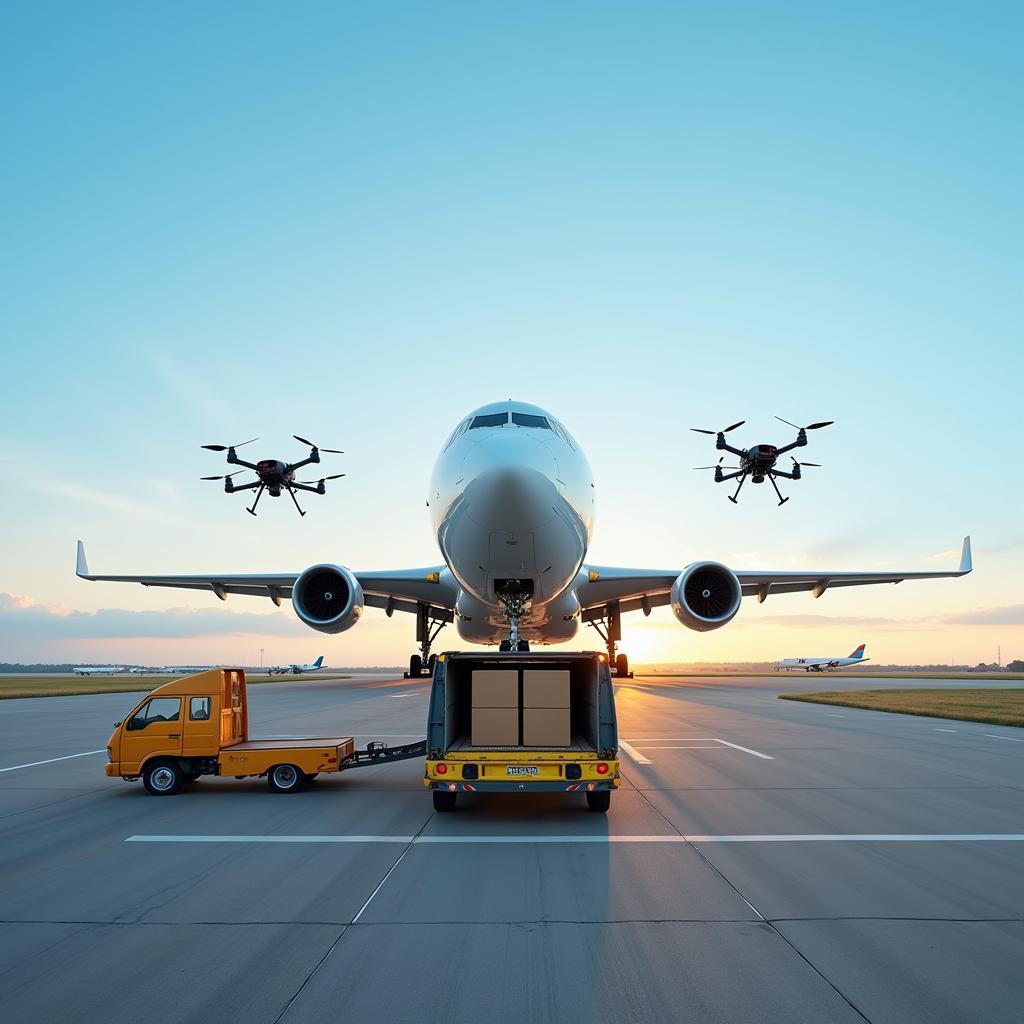The history of ASEAN air cargo is a captivating narrative of remarkable growth, driven by the region’s economic dynamism and increasing global trade integration. From humble beginnings to becoming a crucial link in the global supply chain, the journey of ASEAN air cargo offers valuable insights into the region’s economic evolution.
 Early Days of ASEAN Air Cargo
Early Days of ASEAN Air Cargo
Taking Off: The Early Years of ASEAN Air Cargo
The story begins in the years following World War II, as nations in Southeast Asia gained independence and began to rebuild their economies. Air transport, despite being in its nascent stage, was quickly recognized as a crucial tool for connecting the geographically dispersed archipelago and facilitating trade. The establishment of national flag carriers, such as Singapore Airlines in 1947 and Thai Airways International in 1960, marked the beginning of commercial air travel and cargo transportation in the region.
During these early years, air cargo primarily consisted of high-value, low-volume goods like electronics, textiles, and perishable products. The limited infrastructure and relatively small aircraft of the time meant that air cargo played a supporting role to sea freight, which was more cost-effective for bulk cargo.
Soaring High: The Rise of ASEAN Air Cargo Hubs
The 1970s witnessed a turning point for ASEAN air cargo with the region’s rapid industrialization and emergence as a global manufacturing hub. This economic transformation fueled an exponential increase in demand for air cargo services, prompting significant investments in airport infrastructure and the expansion of cargo airline fleets. Singapore’s Changi Airport, with its strategic location and state-of-the-art facilities, emerged as a leading global air cargo hub, attracting major international cargo carriers and establishing itself as a key gateway for trade between Asia, Europe, and North America.
Other ASEAN nations followed suit, developing their own air cargo hubs to capitalize on the burgeoning trade opportunities. Bangkok’s Suvarnabhumi Airport, Kuala Lumpur International Airport, and Jakarta’s Soekarno-Hatta International Airport emerged as significant regional hubs, each catering to specific trade routes and industries. This network of interconnected air cargo hubs facilitated the seamless flow of goods within the region and beyond, solidifying ASEAN’s position as a vital link in the global supply chain.
Navigating Turbulence: Challenges and Opportunities
The growth of ASEAN air cargo hasn’t been without its challenges. The 1997 Asian Financial Crisis, the global economic downturn of 2008, and geopolitical uncertainties have tested the resilience of the industry. However, each challenge has been met with remarkable adaptability and innovation.
“The ASEAN air cargo sector has consistently demonstrated its ability to navigate turbulent times,” observes Dr. Sarah Lim, a leading aviation economist. “By embracing technology, fostering collaboration, and prioritizing efficiency, ASEAN air cargo stakeholders have turned challenges into opportunities for growth.”
Charting the Future: Innovation and Sustainability in ASEAN Air Cargo
Today, ASEAN air cargo stands at the cusp of a new era shaped by technological advancements and a growing emphasis on sustainability. The rise of e-commerce, particularly in Southeast Asia’s rapidly expanding digital economy, has led to a surge in demand for express delivery services and specialized handling of e-commerce shipments. This shift has prompted air cargo operators to embrace digitalization, optimize logistics networks, and enhance efficiency to meet the evolving needs of customers.
 Future of ASEAN Air Cargo
Future of ASEAN Air Cargo
Furthermore, the ASEAN air cargo industry is increasingly prioritizing sustainability to mitigate its environmental impact. Initiatives such as adopting fuel-efficient aircraft, optimizing flight routes, and investing in sustainable aviation fuels are gaining traction as stakeholders strive to reduce their carbon footprint and promote responsible growth.
Conclusion
The journey of ASEAN air cargo is a testament to the region’s economic dynamism and its ability to adapt to changing global trade landscapes. From its humble beginnings to its current status as a critical node in the global supply chain, ASEAN air cargo has played a pivotal role in the region’s economic transformation. As the industry embraces digitalization and prioritizes sustainability, it is poised for continued growth, further solidifying ASEAN’s position as a global trade powerhouse.
FAQs
1. What are the key factors driving the growth of ASEAN air cargo?
The growth of ASEAN air cargo is primarily driven by the region’s robust economic growth, expanding manufacturing sector, and increasing integration into global trade networks.
2. What are the major challenges faced by the ASEAN air cargo industry?
Key challenges include infrastructure constraints, competition from other regions, and the need to adapt to technological advancements and sustainability requirements.
3. What are some of the innovative solutions being implemented in ASEAN air cargo?
The industry is actively embracing digitalization, implementing automation, and exploring the use of drones for last-mile delivery to enhance efficiency and cater to the growing e-commerce sector.
4. How is the ASEAN air cargo industry addressing sustainability concerns?
Stakeholders are investing in fuel-efficient aircraft, optimizing flight routes, and exploring the use of sustainable aviation fuels to minimize environmental impact.
5. What is the future outlook for ASEAN air cargo?
The outlook for ASEAN air cargo remains positive, with continued growth anticipated due to the region’s economic potential and the industry’s commitment to innovation and sustainability.
Need More Information?
For more insights into the dynamic world of ASEAN trade and logistics, explore our related articles:
Contact us today at 0369020373 or [email protected]. Our dedicated team is available 24/7 to assist you. Visit us at Thôn Ngọc Liễn, Hiệp Hòa, Bắc Giang, Việt Nam.


